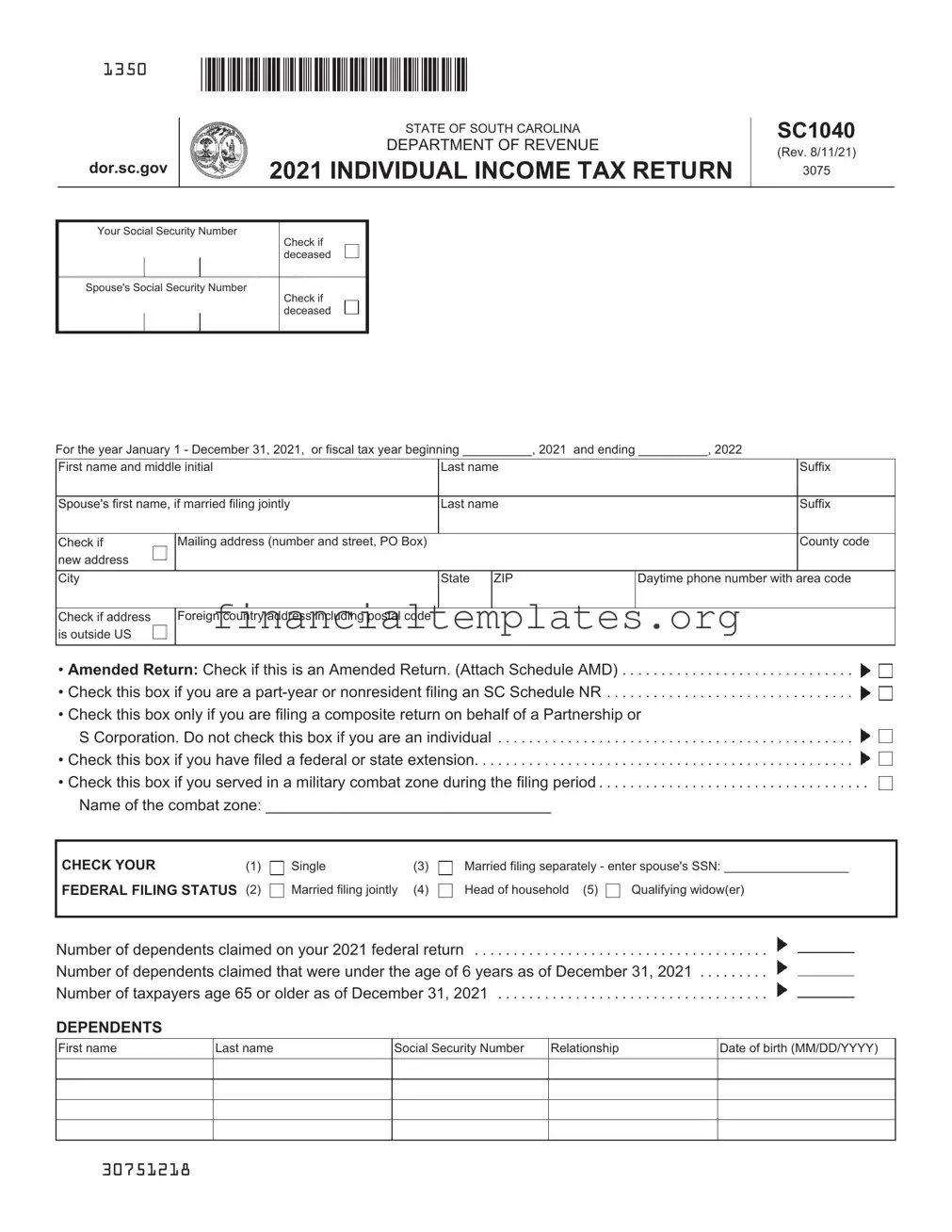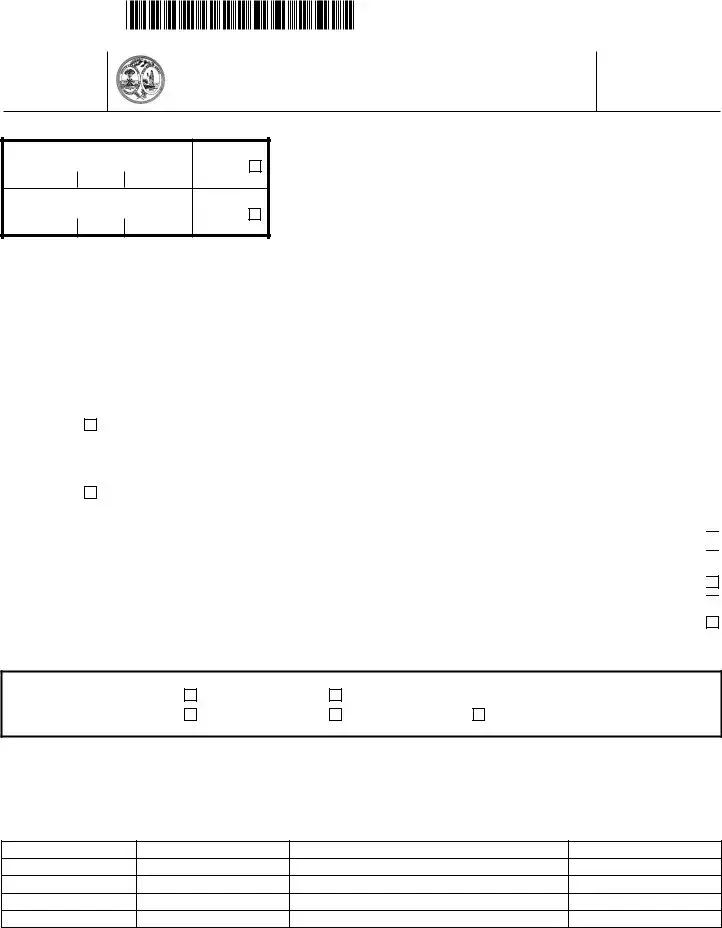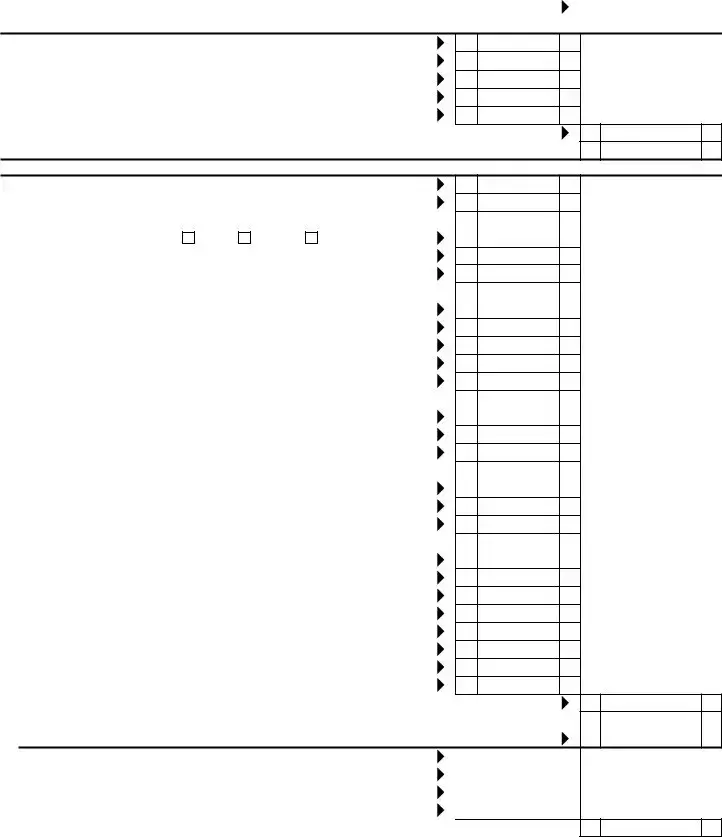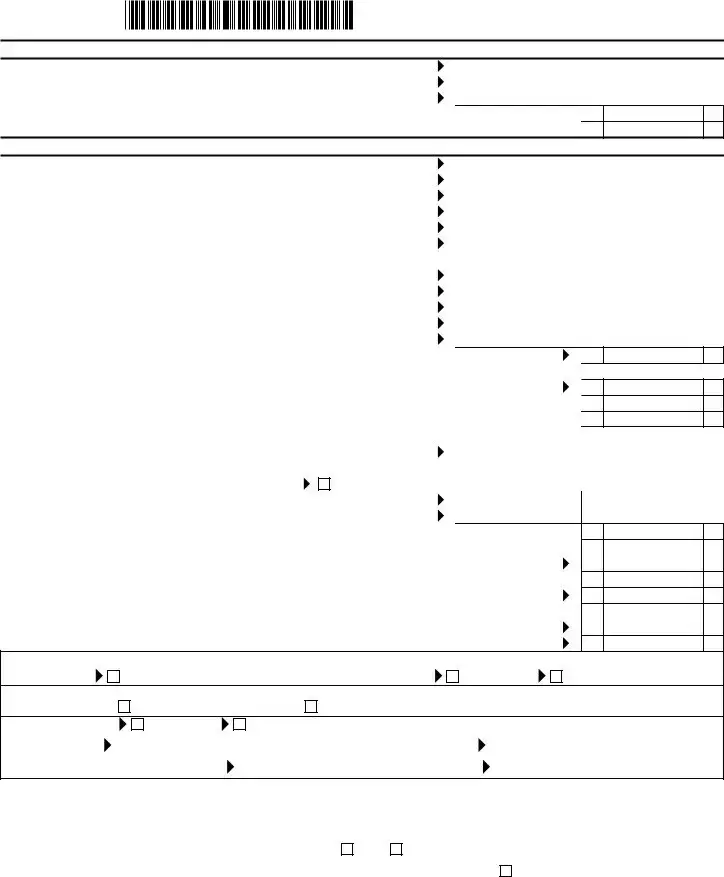The Federal 1040 Income Tax Return is remarkably similar to the SC 1040 form, especially in its primary function of reporting annual income, tax deductions, and tax credits to calculate taxes owed or refunds due to the taxpayer. Both forms require taxpayers to report wages, salaries, interest earned, dividends, and various other types of income. They also allow for deductions and credits that reduce taxable income, such as educational expenses, earned income credit, and child tax credits. The structure of both forms facilitates a step-by-step calculation to determine the taxpayer's final tax liability or refund due.
The W-2 form, issued by employers, is integral to the tax filing process and closely relates to the SC 1040 form. It provides vital information about the taxpayer's wages and taxes withheld throughout the year. This form's data is essential for accurately completing the SC 1040, particularly in determining the amount of income tax already paid and identifying any potential refund or additional tax owing. The connectivity between these documents underscores the importance of accurate and comprehensive reporting of wage information.
Form 1099 is another document closely linked to the SC 1040 form. Various 1099 forms report different types of income, such as interest, dividends, government payments, and income from freelance work. Like the W-2, the 1099 forms provide information necessary for completing the SC 1040 accurately, ensuring that all taxable income is reported. This comprehensive accounting allows taxpayers to pay the correct amount of taxes, reflecting non-wage earnings.
The Schedule NR, specifically designed for part-year residents or nonresidents, complements the SC 1040 form. It requires detailed income information, similar to the main tax form but focuses on income sourced from within the state for those not residing in South Carolina the entire tax year. This schedule helps determine the portion of income subject to state taxes, ensuring fair taxation based on residency status and preventing double taxation of income.
Form W-4 is closely related to the SC 1040 in its role in adjusting tax withholding levels. While not directly linked in their use, the information from the W-4 influences the data entered on the W-2, which then impacts the SC 1040. By appropriately filling out the W-4, taxpayers can ensure that their employers withhold the correct amount of taxes, potentially affecting the final calculation on their state tax return and the size of their refund or amount owed.
Schedule AMD is used for amending previously filed tax returns and works directly with the SC 1040 when corrections or updates to a taxpayer's income, deductions, or credits are necessary. This schedule requires a detailed explanation of the changes, just as the federal 1040X form does for amendments to the federal return. This ensures that taxpayers can accurately rectify their tax responsibilities with the state.
Form SC1040TT, the tax table for the SC 1040, is crucial for calculating the taxpayer's final tax liability based on their taxable income. This document mirrors the role of tax tables and tax rate schedules at the federal level, providing a method to determine the amount of tax owed to the state. It simplifies the tax calculation process, ensuring taxpayers apply the correct tax rates to their income levels.
Form I-335, the Active Trade or Business Income Tax Form, interacts with the SC 1040 by offering a specific deduction for income derived from active trade or business operations within South Carolina. This form takes into account particular types of business income, influencing the overall taxable income reported on the SC 1040. It serves to lower taxable income for qualifying taxpayers, much like specific business deductions do on the federal return.
The Estimated Tax Payment vouchers are preparatory documents for taxpayers who anticipate owing taxes when filing their SC 1040 form. They facilitate the payment of estimated taxes throughout the year, closely emulating the purpose of the federal 1040-ES vouchers. These payments impact the total tax calculation on the annual return, ensuring taxpayers can manage their tax burden progressively throughout the year.
Lastly, the Use Tax declaration on the SC 1040 form parallels the concept of self-reporting use taxes on purchases made out-of-state, similar to declarations made on forms in other states where use tax applies. This entry allows taxpayers to comply with state tax laws on purchases that were not subject to sales tax at the time of sale, demonstrating the varied ways state and local tax policies interact with individual tax responsibilities.












 Number of dependents claimed that were under the age of 6 years as of December 31, 2021 . . . . . . . . .
Number of dependents claimed that were under the age of 6 years as of December 31, 2021 . . . . . . . . . 
 Number of taxpayers age 65 or older as of December 31, 2021 . . . . . . . . . . . . . . . . . . . . . . . . . . . . . . . . . . .
Number of taxpayers age 65 or older as of December 31, 2021 . . . . . . . . . . . . . . . . . . . . . . . . . . . . . . . . . . . 


